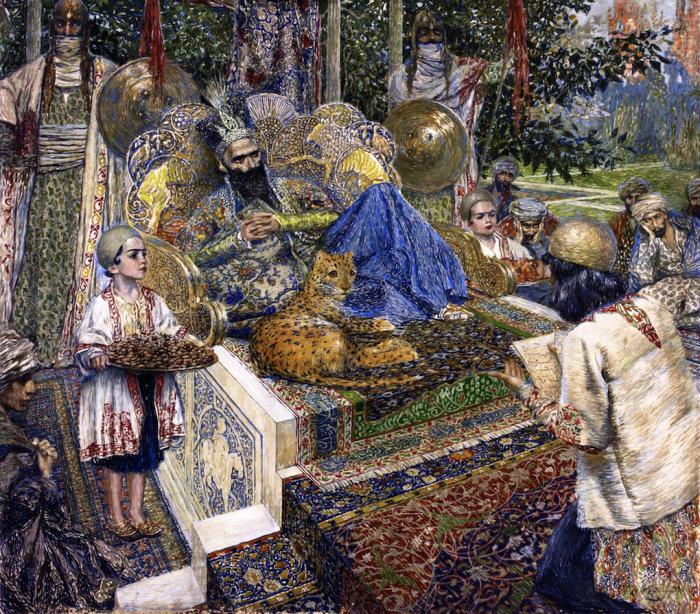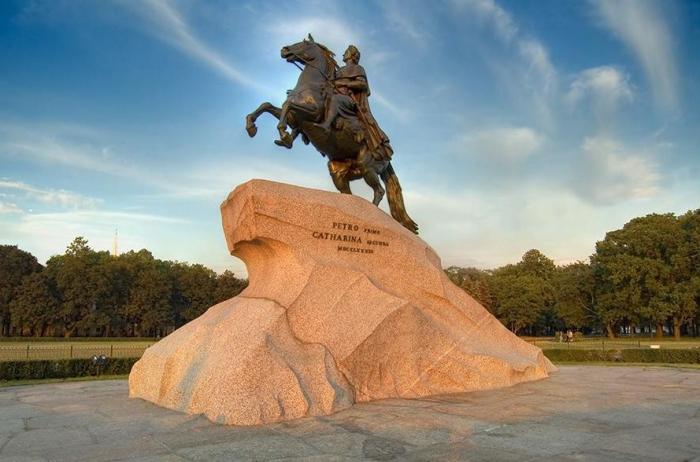Main character. "The Bronze Horseman" is a verse poem by A.S. Pushkin
The poem "The Bronze Horseman" waswas created by Pushkin in the estate of Boldino in 1833 in a very fruitful period for the poet. Unfortunately, this magnificent work did not pass through the censorship of Tsar Nicholas I. The press in one of the modern literary magazines in 1834 allowed only its beginning. After the death of Pushkin in 1837 with the changes introduced by VA Zhukovsky, the poem nevertheless appeared in the journal Sovremennik. But without all the censorship corrections that distorted the author's meaning, the work was printed only in 1904.

Pushkin, "The Bronze Horseman": the protagonist
The "Bronze Horseman" poem was the lastverse story of Alexander Pushkin about the sovereign Russian Peter the Great and about the "Petersburg" period in the history of Russia. The main characters of the poem "The Bronze Horseman" - the most ordinary man - a resident of St. Petersburg - and the mythical statue of Peter I. However, here as always in Pushkin, everything is not so simple.
The work tells about a tragic fatethe usual and nothing remarkable resident of Eugene, who suffered during the terrible flooding on the Neva River. This story became the basis for historical and philosophical generalizations, closely related to the role of the reforming tsar in Russian history and the fate of his main brainchild - Petersburg. This work became the first urbanistic poem in Russian literature.
Small man
The "Bronze Horseman" poem is considered one of the mostperfect works of the genius poet. It was written with a tetrameter iambic. At once it is necessary to note how accurately and artistically Pushkin creates visual and auditory images. First you can hear the festive metropolitan luxury in the glitter and noise of balls and the hissing of glasses, and then - see the poor and shocked Eugene, a step away from insanity, he walks along the pavement of the Neva.
The work is presented as tragica story in which an unhappy official is the protagonist. The bronze rider also symbolizes the state with which an ordinary person who has entered into a confrontation with him will never become a winner. The theme of a "small" person, an insignificant and miserable hero, was very popular among poets and writers of the late 1920s.

Peter the Great
The very first appeared main character - a copperrider Peter I, who does not appear in the work as a historical character, but is represented as a statue of a deified statue, and here it does not at all refer to the time of his reign. His epoch for the writer became a long period in the history of the Russian state, which did not end even after the death of the tsar-reformer. Pushkin does not address the origins of Peter's epoch, he is more interested in the results of modern times. He looked at Peter from a high historical point of the events of the recent past - in 1824 on November 7, when a terrible flood took place in St. Petersburg, which became the central plot of the work where a conflict between the city and the elements took place. And this is a historical fact, the documentary nature of which is confirmed by the author himself in the foreword and notes.

Unhappy Evgeny
The second main character in the poem "The Bronze Horseman" andthe central character is Eugene. The faces of the other Petersburg residents are indistinguishable, it is a crowded "people" on the street, sinking from the flood in the first part, and indifferent and cold people in the second. The real background was the famous Senate Square of the Northern Capital, streets and backwoods, where before the flood was the "old house" of the beloved girl Eugene - Parasha - and her widow mother.
Evgeniy went crazy with the tragedy,having learned that his beloved died from the unexpectedly overwhelmed terrible natural elements. He no longer returns to his home, but becomes an unhappy urban madman.

The mythological protagonist is a brass rider
A rather important role in the work playslegendary mythological semantic plan, he is immediately represented in the very title of the poem - "The Bronze Horseman." Then, in an introduction with a historical fact, he shades the plot, which tells about the fate of Eugene and the flood.
The idol on the bronze horse from time to timereminds of himself and becomes the culmination of a poem in which the main character - a brass rider - chases after Eugene. There is already an image of the main mythological character that dominates the plot, and in the meantime Petersburg is already losing its real outlines and is becoming a conditional and mythological space.
Pushkin specially represents his hero withoutspecial signs, as the most simple man in the crowd, dreaming of quiet family happiness. In the finale of the poem Eugene, poor, lonely and unnecessary, suddenly sees and finds that in all his troubles the "proud idol" is to blame, and then he brings his anger upon him.
The poem clearly traces the perennial conflict between a state that is indifferent to the problems of the people and a simple human person whose resolution has never been found.
</ p>







